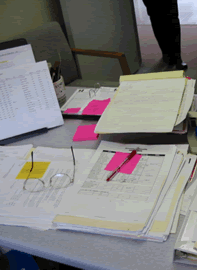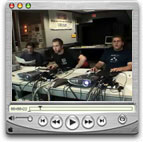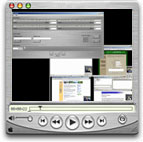 |
|||||||||||
|
Task Collaboration
| Objectives | |
| • | Develop support tools to allow continued testing of prototype environments, specifically a capture environment and media review tool for doing detailed ethnographic study of distributed activity |
| • | Provide design guidelines and foundations for design guidelines for distributed collaborative environments |
| • | Advance theory of distributed cognition by deepening our understanding
of coordination, stabilization and activity |
Project
Video |
||
|
||
Software
Demos |
||
|
||
|
||
|
|
 |
|
|
| Research Questions | |
| • | How do people avoid, recover or minimize the effects of miscoordination and error? |
| • | How do shared representations structure interaction? |
| • | What are operational spaces and how can they be used to provide design principles for collaborative environments? |
| Project Status | |
| Introduced the theoretical concepts of: | |
| • | Operational space – environments are structured collections of operational spaces. Given a specification of tasks it ought to be possible to identify the appropriate operational spaces to integtrate in an collaborative environment |
| • | Stabilization – a standard technique for ensuring that persistent state is usable. |
| • | Working with new network formalisms to explore consequences of team structure, and communication patterns. |
|
|||||||||
 |
|
||||||||
| Design Guidelines | |
| • | Working on new concepts such as vigilance, miscoorindation, stabilizations, operational spaces, and visual complexity in both individual and group contexts as the basis for design guidelines. |
|
|
|
|
|
|
|
|
|
|














